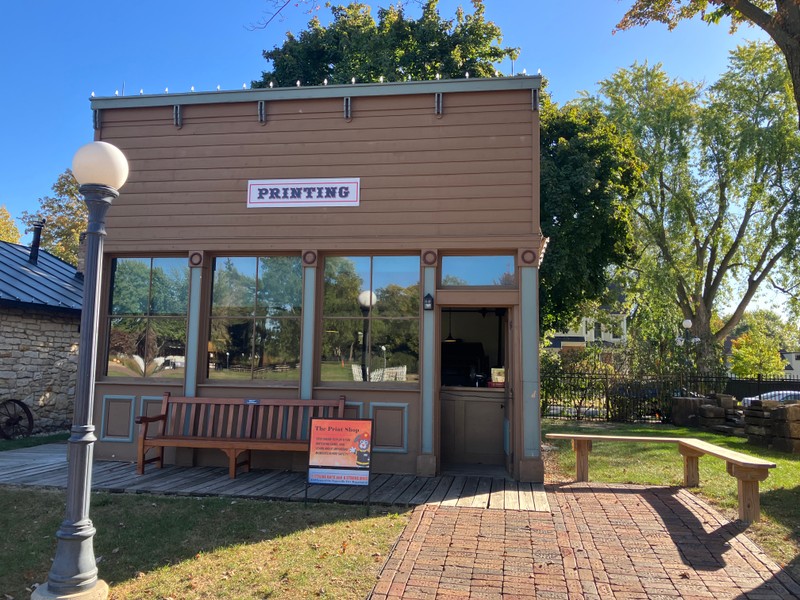Print Shop
Introduction
Author-Uploaded Audio
Listen to a narration of this entry's description by Jessica Toran.
Text-to-speech Audio
In 1849, the town was growing as Joe Naper had planned—churches and schools were springing up, business was booming, and settlers cultivated successful farms. As the town developed, Naperville residents sought to encourage the growing business and cultural interests by creating a local newspaper. They bought presses from the Chicago Journal, turned a shed into a print shop, and furnished it with inks, paper, and type; and searched for a publisher, eventually settling on C.J. Sellon. In December 1849, Sellon began publishing Naperville’s first paper, the DuPage County Recorder. Unfortunately, Sellon was a man who could easily be bought. Politicians paid him to turn the Recorder into a partisan paper called the Democratic Plaindealer, but after just a few issues, Sellon took the paper’s funds and left town. The DuPage County Recorder was only the first of several early Naperville papers to fail. During the 1850s and 1860s, a succession of local newspapers quickly folded until, in 1867, David Givler, a long-time resident of Naperville, purchased the DuPage County Press. Under his direction it became a reputable paper called the Naperville Clarion. David Givler published the Naperville Clarion from 1867 to 1905. Like many small-town publishers, Givler served as both editor, reporter, and master printer for his weekly paper., Upon his death, the paper passed to his son, Rollo N. Givler. The Naperville Clarion continued to publish local news until it was discontinued in the 1970s. This print shop was originally a garage, built in 1929, but was transformed into a print shop when it was moved to Naper Settlement in 1981.
Images

Backstory and Context
Text-to-speech Audio
Before an apprenticeship in the print shop can even begin, a prospective apprentice must pass several exams, including mathematics. As a printer, math is vital to ensure spacing is correct and the content fits into the chase, or frames, that will be inked and pressed. Prior to the electric age, many printing presses relied on levers and were operated manually. For example, the Chandler and Price Job Press used a foot pedal lever to turn a wheel which pressed mounted paper to the ink plate. Smaller projects, like tickets, letterheads, handbills, and calling cards were made on hand presses. As technology improved, a larger, steam-operated Babcock Press was introduced to print shops. Located outside the shop, an engine would be steadily fed coal to heat a boiler of water and create steam which builds in pressure to push a piston. Each time the piston moves, a wheel and axle in the shop would spin and allow the Babcock press to start working. As more print shops could expand to steam-powered and electricity-powered presses, the rate of production and speed at which news could be delivered dramatically increased.
